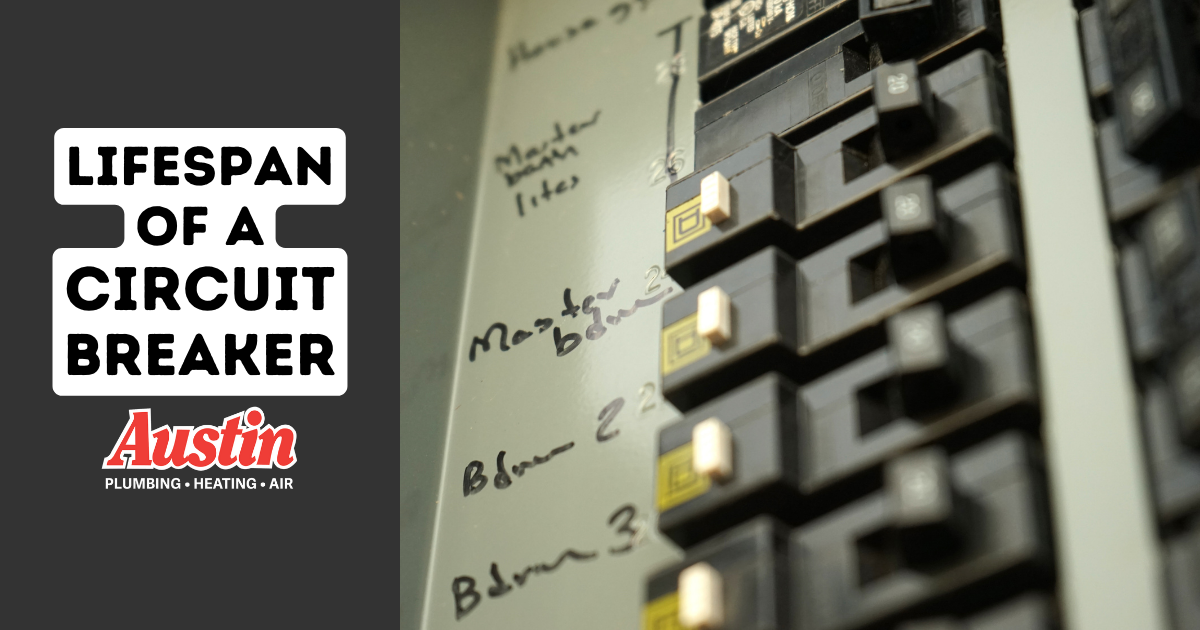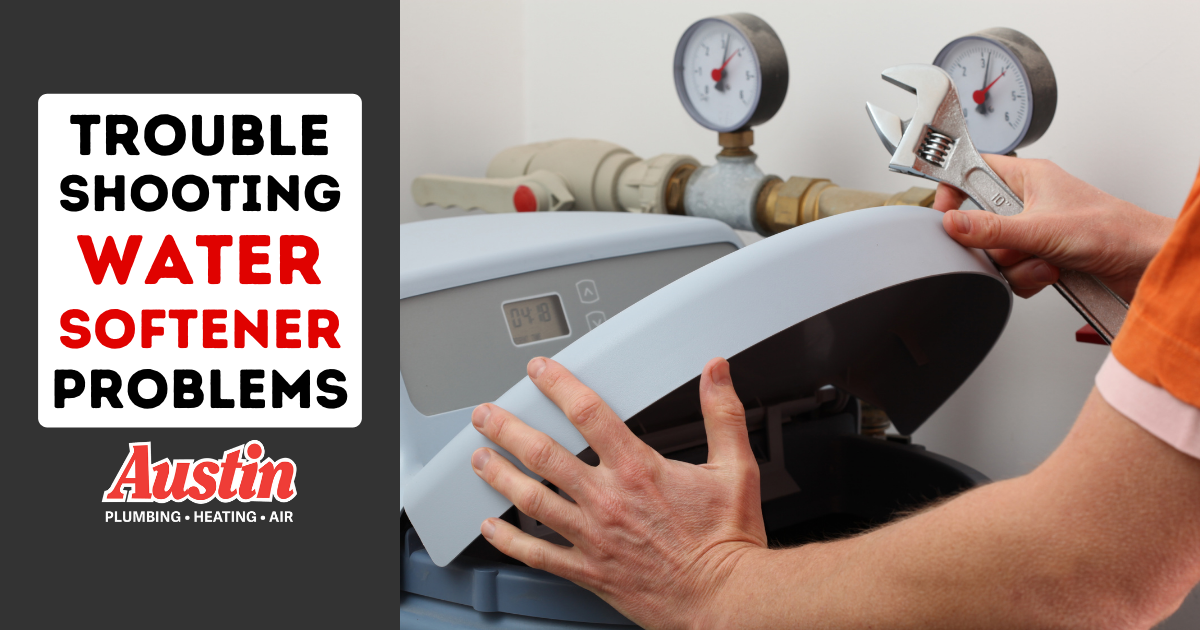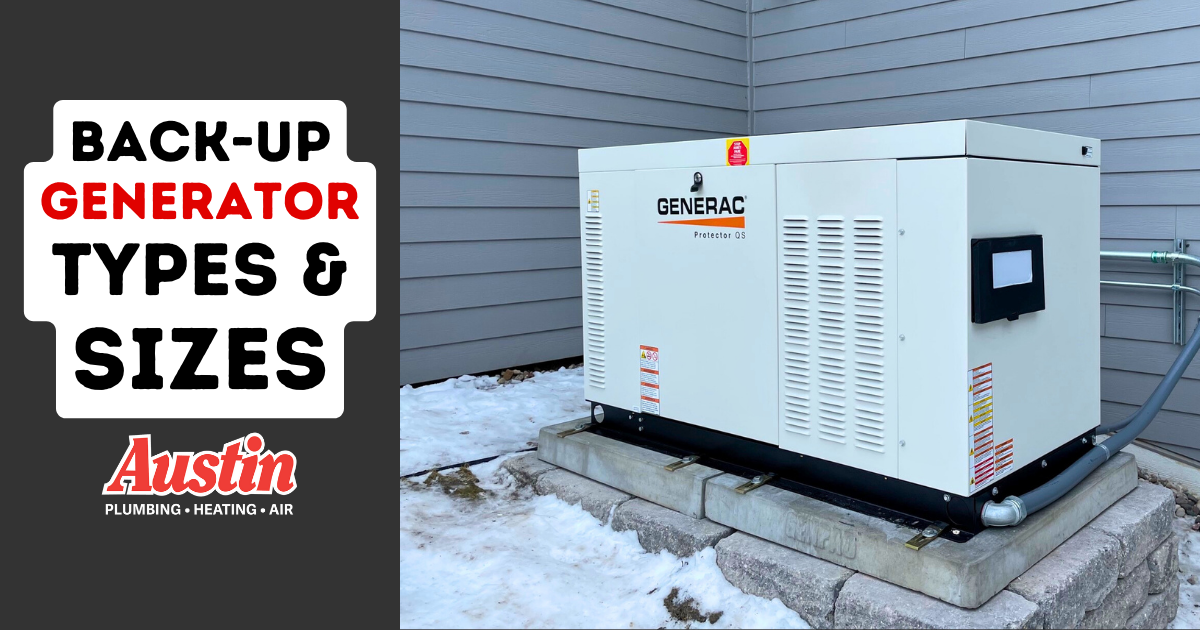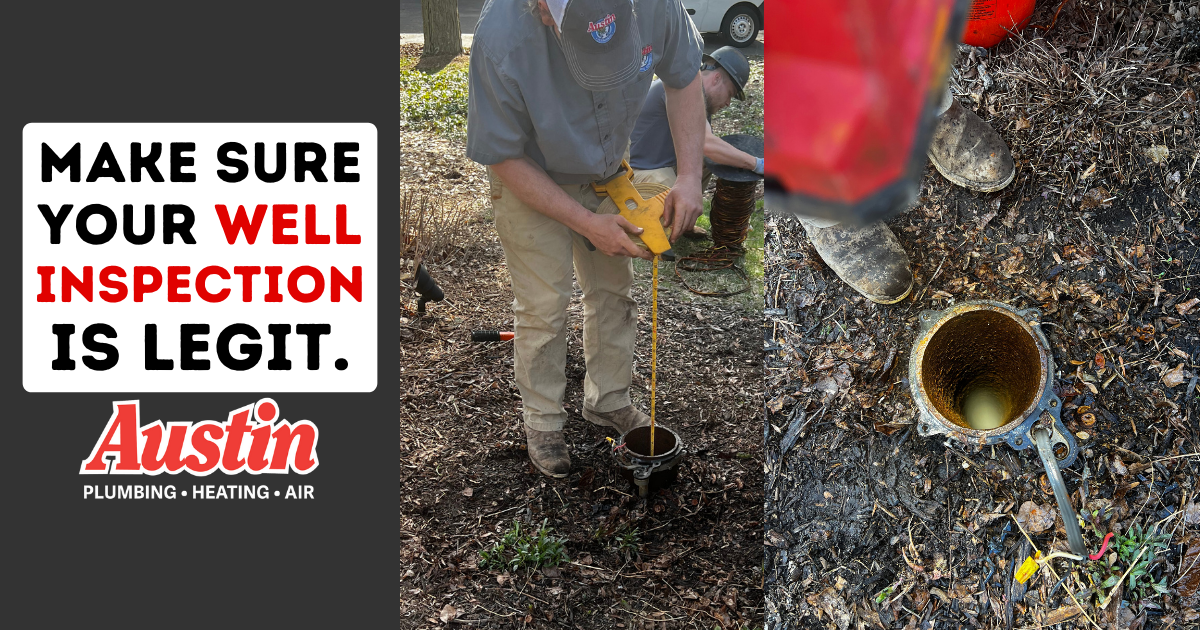All About Inverter Air Conditioners: Side-Discharge AC vs. Standard Cube AC
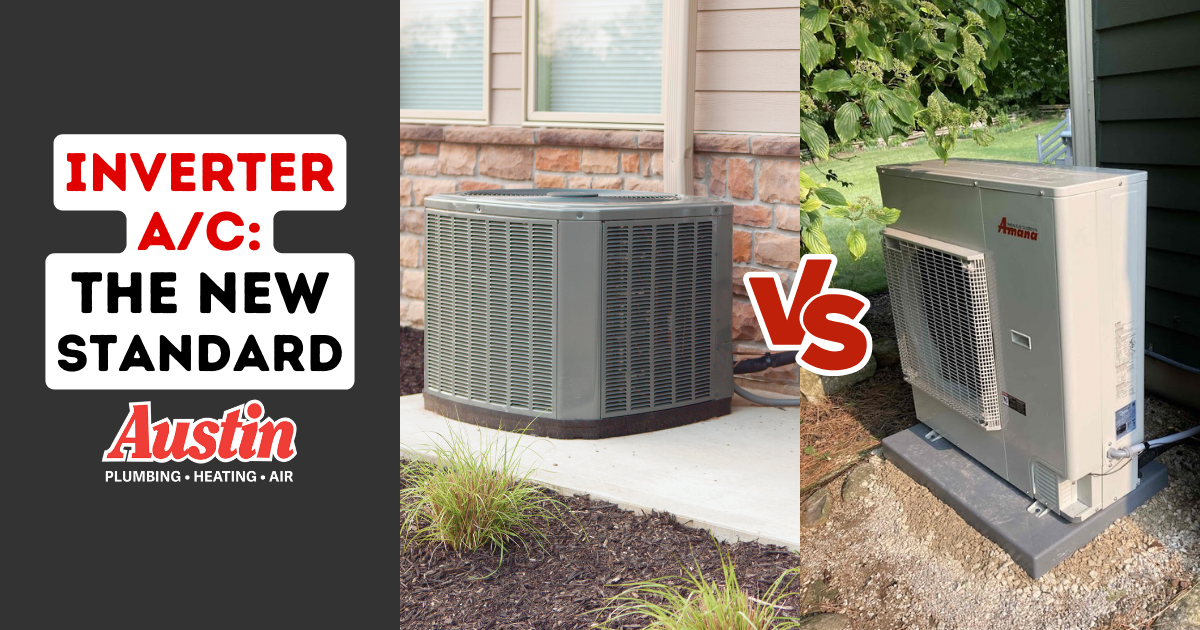
A lesson from our Master Tradesman on how side-discharge ACs beat the pants off traditional units-and why the American HVAC industry has gone sideways to avoid using them.
Since basically the dawn of central air conditioning’s existence, AC units have come in cubes. For obvious reasons, the bottom is inaccessible-it’s got to sit somewhere-while the four lateral sides draw air into the unit. The heat removed from the air then exits via the only remaining face of the cube, the top.
There’s a reason we’re breaking it down like this, so bear with us.
Side-Discharge (aka Inverter) Air Conditioning
Have you heard the term “side-discharge air conditioner” before? It sounds like it should apply to a standard, cube-shaped air conditioner, like the kind we described above. But the term “side-discharge” actually refers to a completely different type of AC.
It’s a little counterintuitive, we know. Technically speaking, all ACs draw air in via at least one side. The thing is, side-discharge ACs intake air through one side only-and, after cooling it, discharge the heat energy via the opposite side of the unit. That’s the most obvious difference between them.
But it’s far from the only difference. Side-discharge AC systems work in a pretty unique (and frankly, better) way to perform their cooling function. We’ll come back to this point, so keep reading.
Less is More
For now, you just need to know that “more sides” doesn’t equal “better” when it comes to air conditioning. Between the two forms of AC we’ve described, single-side discharge almost always serves as a distinguishing mark of the superior technology.
On that note, why not make things a little less confusing? Feel free to refer to side-discharge ACs by their other name: inverter ACs. We use these terms interchangeably.
Inverter AC Units aren’t new to the world-they’re just new to the US.
Ductless air conditioners are far from new; in fact, they’re all the rage in climates that don’t have central AC. Whenever you see a picture of those little outdoor AC units that could fit in a suitcase, what you’re looking at is one example of ductless technology: a mini-split. A side-discharge inverter mini-split, to be precise.
As a general rule, mini-splits utilize a side-discharge inverter (we’ll also explain what this means later). Although not prevalent, these mini-splits have clearly existed in the US for some time. They’re not a new technology per se. They just aren’t nearly as familiar to us as the boxy, clunky machines we know and love…for better or for worse.
What is new is the concept of incorporating one of these inverter-powered mini-splits into a whole-home ducted AC system (in layman’s terms, a “central AC unit”).
Q: Don’t other countries have central AC systems like ours?
A: Nope! The US is the only HVAC market in the world that uses ductwork.
Yes, you read that correctly. Central (ducted) AC is an American phenomenon. Yet, to American consumers, it feels like the most normal thing in the world. And while first-world air conditioning access is nothing less than a modern miracle, you might be surprised at how much it can still be improved.
Of course, the US is by no means small-we represent a huge portion of the world market-but we’re still just one country. So it’s worth asking why, when the rest of the world thinks of air conditioning, they don’t see a metal cube pop up in their minds like many of us do. To them, “AC” is synonymous with those ductless mini-splits that utilize a side-discharge inverter.
Amana Quietly Brings Side-Discharge AC Tech to a Wider Audience
The world’s leader in side-discharge air conditioning, inverter technology, and swing compressors is a brand called Amana. Amana is the premium brand belonging to a company called Daikin-the largest manufacturer of HVAC equipment not only in the US, but the world. They’re also the only company that manufactures the inverters for its own brands, meaning they actually build the tech that they sell through Amana.
A long time ago, Amana developed a side-discharge air conditioner specifically tailored to work as part of a ducted system. It’s actually been an option for US homeowners for a long time. So why haven’t we heard more about it since then? We’ll get to that, too. In the meantime, Austin Plumbing, Heating & Air has been installing and servicing these inverter ACs in Wisconsin for decades.
What exactly is a side-discharge inverter AC?
If you’ve been paying attention up to this point, your curiosity has finally been rewarded. Below, we’ll explain how inverter tech actually works with respect to air conditioners. But for the sake of this guide, we’re going to keep it a pretty high-level discussion.
Let’s start with a basic, working definition:
- A whole-home inverter or side-discharge air conditioner is nothing more than a large, ductless, mini-split unit designed to work with a furnace and regular duct work.
You’ll find an inverter performs the exact same job as a cube AC, but in a different way and with more impressive results.
What gets inverted in a side-discharge air conditioner? (Why is it called an “inverter”?)
Here’s the essential process that gives inverters their name as well as their leg-up over cube ACs:
- An inverter AC inverts power to convert it into a more efficient form.
- This improved power is easier to control, allowing the unit to use better fans and compressors.
- These advanced fans and compressors can be controlled at micro-increments. In other words, we now have an AC designed for any outside condition.
- Better components further reduce the amount of energy needed to cool the house.
- Conservative use of energy yields a longer design life.
- Ultimately, the capability to run for longer periods of time means an increase in comfort for the customer.
And there, in a nutshell, is the entire point of an inverter: to make your daily life more comfortable.
How Inverters Work Differently from Cube Air Conditioners
Inside an inverter AC is a rectifier that takes inefficient, sloppy, 220-volt household power through a three-step process to invert it from a sinusoidal wave into one straight electrical current. This is called direct-current (DC) voltage.
DC power doesn’t travel as far as it would in its original form, which is why DC isn’t usually used to power homes. Thus, our air conditioning framework is usually ducted to accommodate alternating-current (AC) electricity instead.
However, DC power is worlds more stable and efficient than AC power. After the incoming 220v AC power has been inverted into DC, that DC voltage is then converted into a manufactured, uber-efficient DC three-phase power. Now, the machine receiving the current can freely regulate the amount of power it sends to each of its parts. For our purposes, that means every component of the air conditioning system receives power on a strictly as-needed basis.
With this “new”-but-not-new power source available, everything is better.
By harnessing inverter technology to turn AC (alternating current) power into DC 3-phase power, manufacturers have been able to step up their game across the board. All motors that run on this manufactured power are quieter, longer-running, and more efficient than their alternatives. The motor in your home AC unit is no exception. Isn’t that cool?
Things just got less confusing!
We’re done talking about alternating-current electricity. Congrats-you made it! For the rest of the guide, we’ll go back to using AC to mean “air conditioner” only.
At last, we’re out of the tech woods and into the nitty-gritty. Now that you understand the essential differences between the two technologies, let’s look at how those differences affect your choice of AC.
What Wisconsin Wants in an Air Conditioner
In this section, side-discharge ACs will go head-to-head against standard cube ACs in six separate categories, each representing one of the traits Wisconsin consumers value most in an air conditioner. The categories are:
- Efficiency
- Footprint
- Noise Level
- Life Expectancy
- Overall Comfort, and…
- Cost.
Let the battles begin!
Round 1: Inverter Efficiency vs. Cube Efficiency
Wait. How is efficiency even quantified? (Good question, by the way.)
A number of everyday household appliances get something called a Seasonal Energy Efficiency Rating (SEER). Heat pumps and air conditioners, however, use an updated set of criteria as of 2023. This new official grading system is called SEER2. We might go more in-depth about how these ratings are calculated in a future guide, but don’t worry! This is not that guide.
In short, SEER2 describes an AC’s energy efficiency in the same way MPG describes a car’s fuel efficiency-your mileage may vary. Realistically speaking, the methodology behind these ratings has its own limitations. That doesn’t make SEER ratings meaningless or useless. It just makes them imperfect, which means they can only be so accurate.
Here’s how things really play out:
- Cube AC ratings: Far from a guarantee, the rating on a cube AC unit reflects its efficiency on a good day. A really good day. Like, an impossibly good day. Suffice it to say your cube will likely never achieve the level of efficiency purported by its SEER2 score (although it may come close in some circumstances).
- Inverter AC ratings: When you look at the SEER2 given to a side-discharge AC, it’s clear they’re treated differently. Rather than assuming ideal conditions, it’s the opposite for inverters-their rating is representative of the worst-case scenario.
If it seems weird to compare the theoretical potential of one air conditioner to the minimum standard of operation for another, you’re right! It is weird, but more on that later. Right now, our point is that a true, proper comparison would require both air conditioners to stand on equal footing.
…Which is why it’s extra funny that despite the stricter standards placed on them, inverters still get higher SEER ratings than cubes.
Efficiency Winner: Side-Discharge Inverter ACs (and it’s not even close)
Round 2: Inverter AC Footprint vs. Cube AC Footprint
In this section, we’re not referring to a unit’s “carbon footprint”, but rather its physical size.
Over the years, as cube ACs have improved in efficiency, they’ve also become more massive. Some modern units are about as big and heavy as a refrigerator-a far cry from the diminutive design of a mini-split.
For comparison, let’s look at a common example of each type of air conditioner:
- A 16-SEER cube AC generally measures about 36″x36″x42″, giving it a volume of 54,432 cubic inches. As if the sheer size of the unit weren’t inconvenient enough, it also weighs about 3 tons (that’s 6,000 pounds). Like trying to carry Bigfoot, moving one of these can easily require two to three men at once.
- On the other hand, the dimensions of a typical side-discharge inverter are roughly 12″x36″x42″. Its volume has been substantially reduced to 18,144 cubic inches, and its weight naturally follows suit. It’s as dainty as Cinderella; Prince Charming wouldn’t even need help lifting it.
We did the math, and…
The inverter AC comes in at exactly one-third the size of the cube. Really let that sink in.
For reference, imagine your refrigerator shrank by about 66%. When it comes to ease of transport (not to mention storage), a mini-split is like…well, the minifridge of air conditioners.
Adding to that, side-discharge ACs are much more forgiving when it comes to placement, and not only because of their size. The way they’re constructed, they can safely function much closer to your house. About 4 inches away from the wall is plenty, unlike the 18 to 24 inches of clearance required by a standard cube air conditioner.
Fun fact: Side-discharge units can also be placed closer to each other, which instantly and understandably wins them the favor of homeowners with multiple AC systems.
Footprint Winner: Side-Discharge Inverter ACs (Has anyone seen my glass slipper?)
Round 3: Noise Level of Inverters vs Cube ACs
Two things can make an air conditioner loud: the compressor and the outdoor fan.
- In a standard cube air conditioner, both of these components are either all-the-way on or all-the-way off. No in-between. So the fan and compressor undergo a lot of strain on startup-and they make sure to let you know. You may have also noticed that they continue to groan loudly for at least the rest of the AC cycle, if not longer.
- A side-discharge unit works differently. Remember the inverter, how it converts power from the source into a more efficient form? This new power is far easier to control and direct, which allows the use of components that are significantly more technologically advanced than a cube’s. Upon startup, a small amount of power is delivered steadily to the outdoor units, bringing the fan and compressor on slowly and silently.
Since we have experience with Amana in particular, we can confirm that their inverters are almost inaudible, even on startup. You’d have to make everyone be quiet and put your ear to the unit in order to pick up any sound.
Quietness Winner: Side-Discharge Inverter ACs
Round 4: Cube AC Lifespan vs. Life of a Side-Discharge AC
Do you want to know what kills anything with a motor? Starting and stopping. This is simply the nature of motorized technology: every time it does its job, it gets closer to death.
The real question is, how can you decrease cycling without sacrificing comfort? In our professional (and human) opinion, just “toughing out” those 80°F summer days until they hit 85 is not a real solution. For obvious reasons, our clients tend to agree. And that, ladies and gentlemen, is why we work with Amana to make inverters an option for Wisconsin residents.
Inverter technology positively and causally correlates with longer AC life.
An inverter’s “soft start” when powering-on your AC improves more than its runtimes. When an air conditioner is able to run for longer durations, as inverters enable side-discharge units to do, all of its fans, compressors, and major wearable components degrade less quickly. In turn, the appliance itself gains longevity.
It doesn’t have to cycle as frequently, and you don’t have to get it replaced as frequently.
Life Expectancy Winner: Side-Discharge ACs (by a landslide)
Round 5: Overall Comfort by AC Type
There’s more to comfort than we discussed in the last round. We think it deserves its own category, and our customers have agreed. So let’s dive into it.
As mentioned previously, a cube is either on and running as hard as it can, or it’s totally off. You can tell it when to start-and by adjusting the settings on your thermostat, you can kind of tell it when to stop-but in the meantime, it’s blasting cold air like its life depends on it (when in fact, the opposite is true). Lather, rinse, repeat until it finally quits working altogether.
Short of switching to a side-discharge unit with an inverter, there’s no way for you to adjust your AC’s power usage. And when it’s 100 degrees outside, who cares? You need everything it can give you.
But what about when it’s not triple-digits outside?
Most of a cube AC is useless most of the time.
That probably sounds hard to believe, and it’s certainly not a pleasant thought. Unfortunately, a standard cube AC is sized with the worst-case scenario in mind. (Noticing a trend yet?)
We get it: when it’s hot, you want it cold. But this is the reality of the situation. Only one to five days out of the year is a typical Wisconsin AC system sized correctly. The other 360 to 364 days, that cube is way larger than it needs to be. All that extra bulk is dead weight. It comes at a cost, and that cost isn’t just monetary. It also directly affects your comfort, which nullifies the purpose of having air conditioning in the first place.
So my AC is big. What’s the big deal?
Size matters, but bigger isn’t better. Here’s why:
When an AC is too big, it cools the surrounding environment too quickly (that’s a thing, believe it or not) without properly addressing the humidity in the air. Clammy, cold and damp, the entire house ends up feeling like a basement. And that’s when your cube decides it’s time to shut off. At this point, it’s not even attempting to dehumidify your home (which is already starting to get hot again, by the way).
To make matters worse, excessively large ACs also tend toward shorter, more frequent cycling, which causes incessant temperature fluctuations-and again, an abbreviated lifespan.
What’s the alternative?
A common thought process goes something like, “Extreme temperatures may be uncommon, but I still want to be prepared for them.” That is totally reasonable. As a matter of fact, we feel exactly the same way.
If you want comfort and control on even the worst of days, it may seem like you’ve got no choice but to go with an oversized air conditioner. What we’re trying to get across here is that that’s not true. There is a better way to cool your home year-round.
Side-discharge air conditioning saves the day yet again.
First of all, inverter ACs are designed so that they can function optimally regardless of weather conditions. Instead of sizing based on what the sky might look like tomorrow, they’re perfectly sized for your home.
Also, when we say inverter air conditioners can run for longer periods of time, that’s an understatement. An inverter is designed to run pretty much non-stop-and that’s a good thing! Side-discharge ACs, because of the way their inverters work, deliver just enough cooling to the home to keep the thermostat satisfied. As the load on the house fluctuates, the AC is able to ramp itself up or down accordingly. Temperatures in the home are more consistent, humidity is managed around the clock, and the overall experience is just so much smoother than that of a cube.
Comfortability Winner: Inverter ACs! (Why don’t you look surprised?)
Round 6: Price of a Side-Discharge AC vs. Price of a Cube
Inverter ACs are a premium product in that they only occupy the upper echelons of energy efficiency. When compared with a low-efficiency, builder’s grade air conditioner, the side-discharge AC will naturally be more expensive.
But that’s not a one-to-one comparison. What if you compare a side-discharge to a cube AC with an equivalent SEER rating? It’s a total wash.
This is also one of those cases where a good brand can deliver more than expected. For a more specific example, consider one of Amana’s 16-SEER inverter ACs: they’re generally equal in cost to a 16-SEER cube AC-and sometimes even less, despite being superior to the cube in every way.
Cost Effectiveness Winner (wait for it): Side-Discharge ACs
Results are in!
Ok, so we ran a tournament with no eliminations. But we wanted to give both ACs a chance to make their respective cases (after all, we do sell and service both kinds!). In the end, inverter ACs dominated in every single category.
What’s the catch?
By all accounts, side-discharge air conditioners should have taken over the US market by now.
…So why haven’t they?
If inverters are superior to cubes, why aren’t they more common?
Inverter technology wipes the floor with our traditional concept of air conditioning, and yet the market doesn’t seem to reflect that. What’s really going on here?
Alas, purists write the dictionary. If you want a true inverter AC, you can’t just get a side-discharge unit and call it a day. You have to install the complete system! That means a brand-new furnace-because heating and cooling systems are interconnected-as well as the side-discharge air conditioner itself; and finally, an OEM thermostat.
In order to deliver on its maximum potential, all the technology must match. That’s how the argument goes. It’s true, too: the average consumer can’t financially justify that kind of expenditure. Before long, though, you won’t even have to.
There’s a module in the works at Amana that will allow us to install a side-discharge AC unit onto an existing furnace like the one in most Wisconsin homes. Of course, if you choose to go the retro-fit route, you won’t get all the features of a full inverter AC system. Still, with the features it does offer, your new side-discharge unit will run circles around your old cube.
When you need help with your air conditioner, call on us!
Got AC questions? Hell, got an AC? We’re experts on that thing that makes your summers bearable. So don’t sweat the small stuff-call Austin Plumbing, Heating & Air at 262-367-3808 any time you need.

